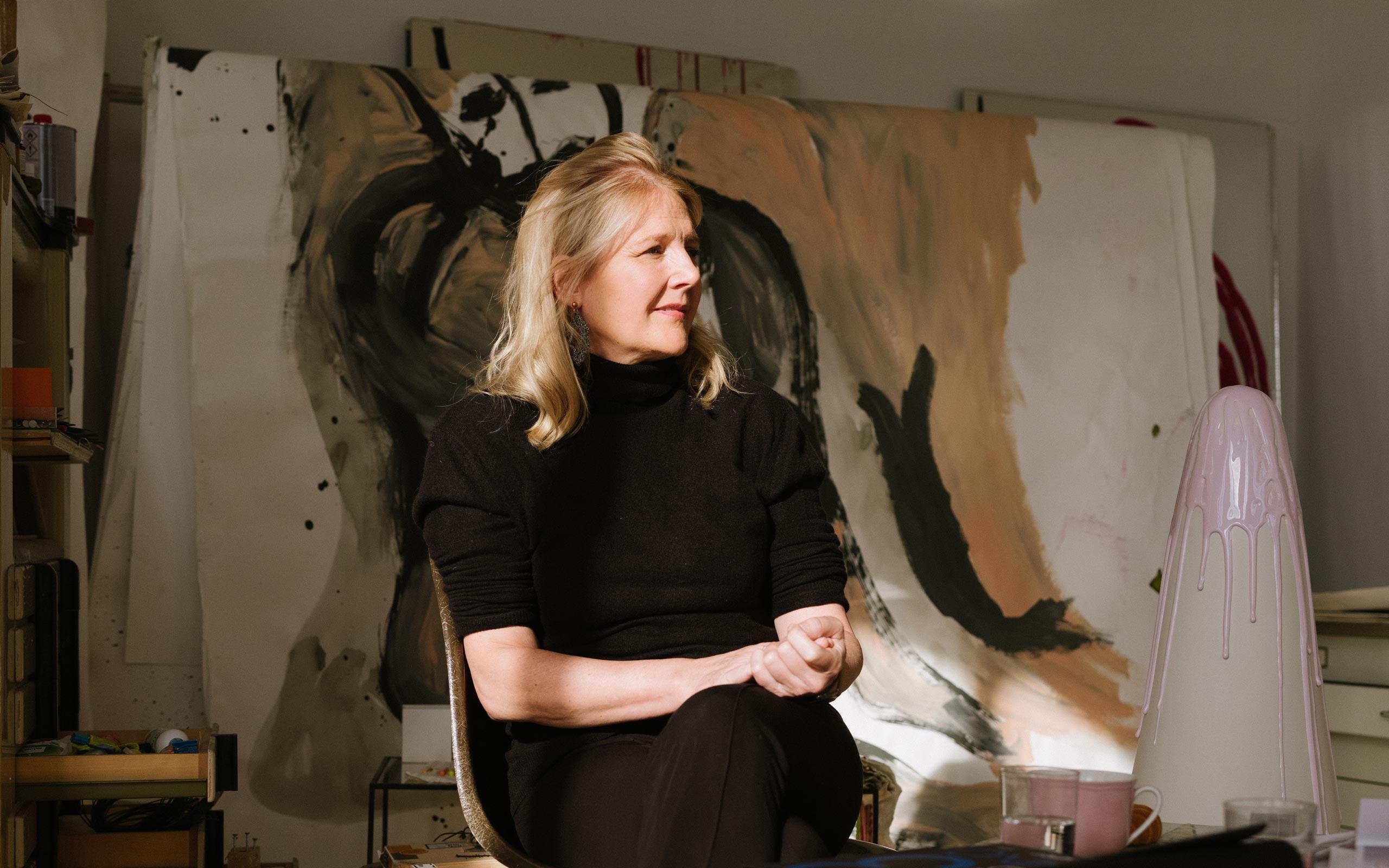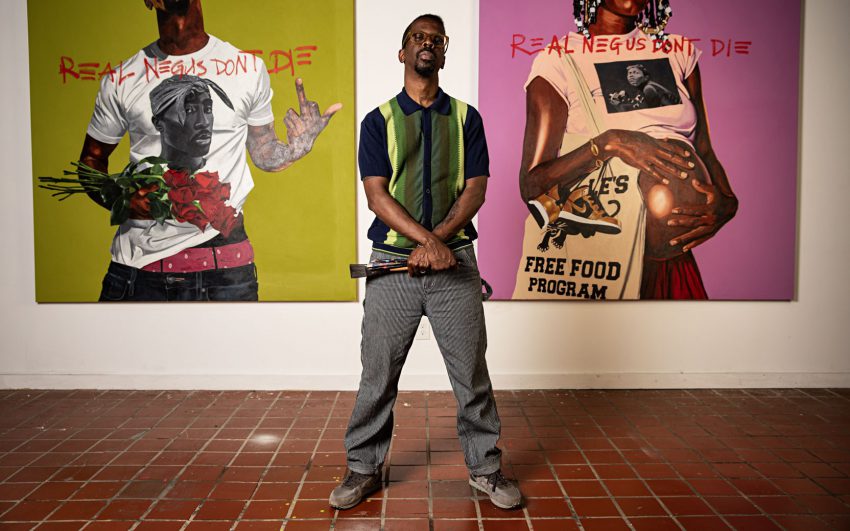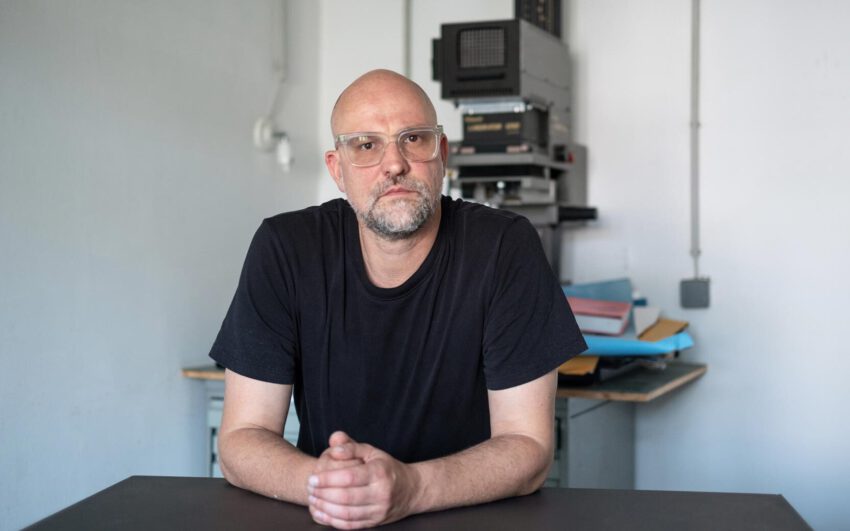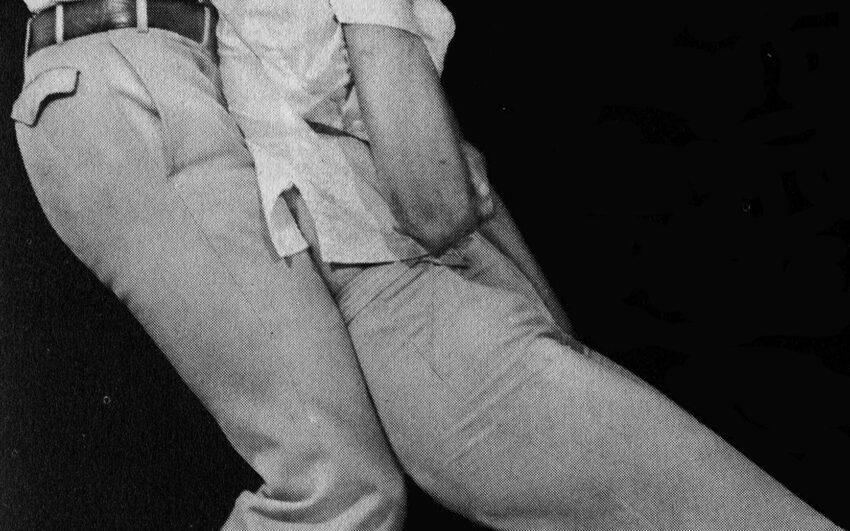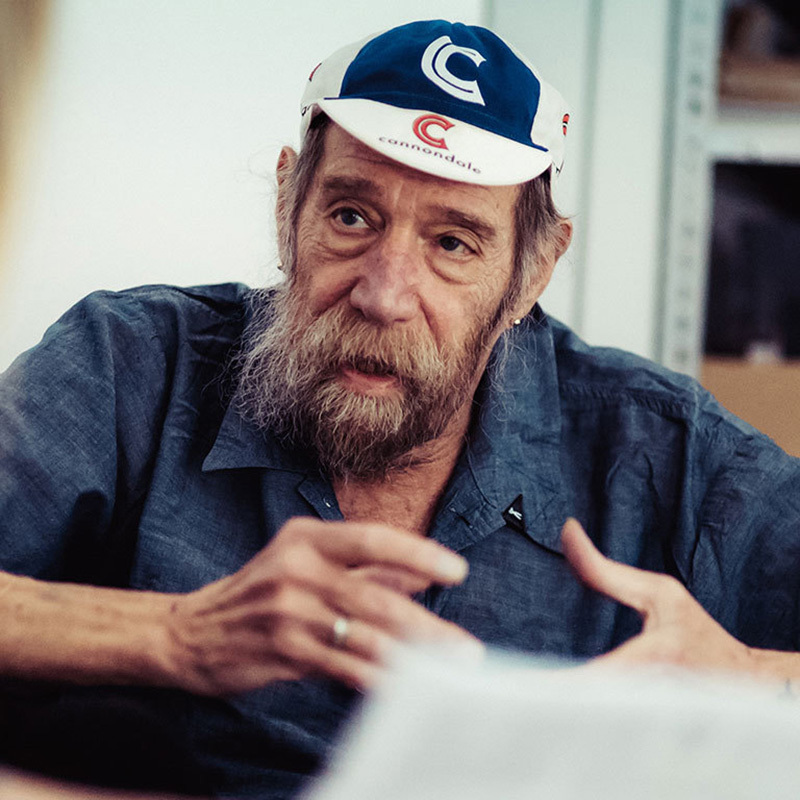In recent years, Nives Widauer has perfected the art of working within a wide variety of media. Today, her scope includes video, photography, collage, installation, painting, and sculpture. Within these forms of expression, she repeatedly switches between or combines digital and analogue working methods. Historical and contemporary events feed into her work; and her great curiosity about our world is palpable throughout.
Nives, how did your interest in art come about?
I had already been writing, drawing, and sewing when I was going to school, and later I started my studies in German, History and History of Art. I like the German word for history “Geschichte” because it contains the word “Schichten”, which means layers. And layers are an important part of my work. I later found my way into art via some detours and many journeys… I think it took me a while to trust my talent as an artist. Anybody who wants to find their own way needs time. Eventually, I came to study electronic audiovisual art. As a result, I – who belong to the generation analogue-digital – once again got into a completely different medium.
What attracted you to video art?
I designed settings of introspection via video, which is a medium that depicts time. That is how I first achieved some artistic recognition: I combined different media and created some of the first video stage sets in the German-speaking theater world. I am talking about the late 1980s, early 1990s, when this kind of stage design was just emerging. I created live video recordings early on; nowadays they have become common practice onstage. I worked for instance for the theater in Basel, the Schauspielhaus in Bochum, or the Burgtheater in Vienna.
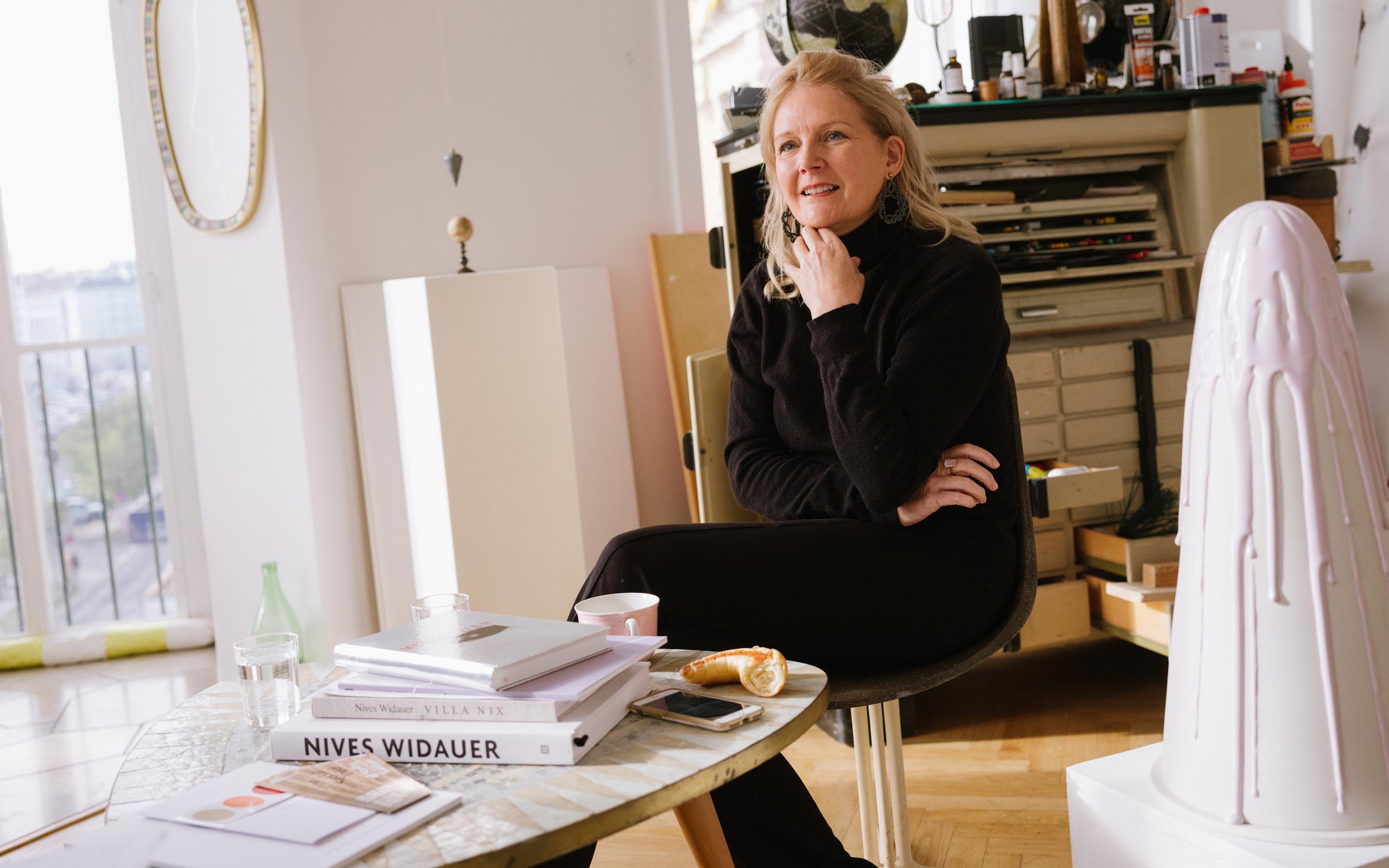
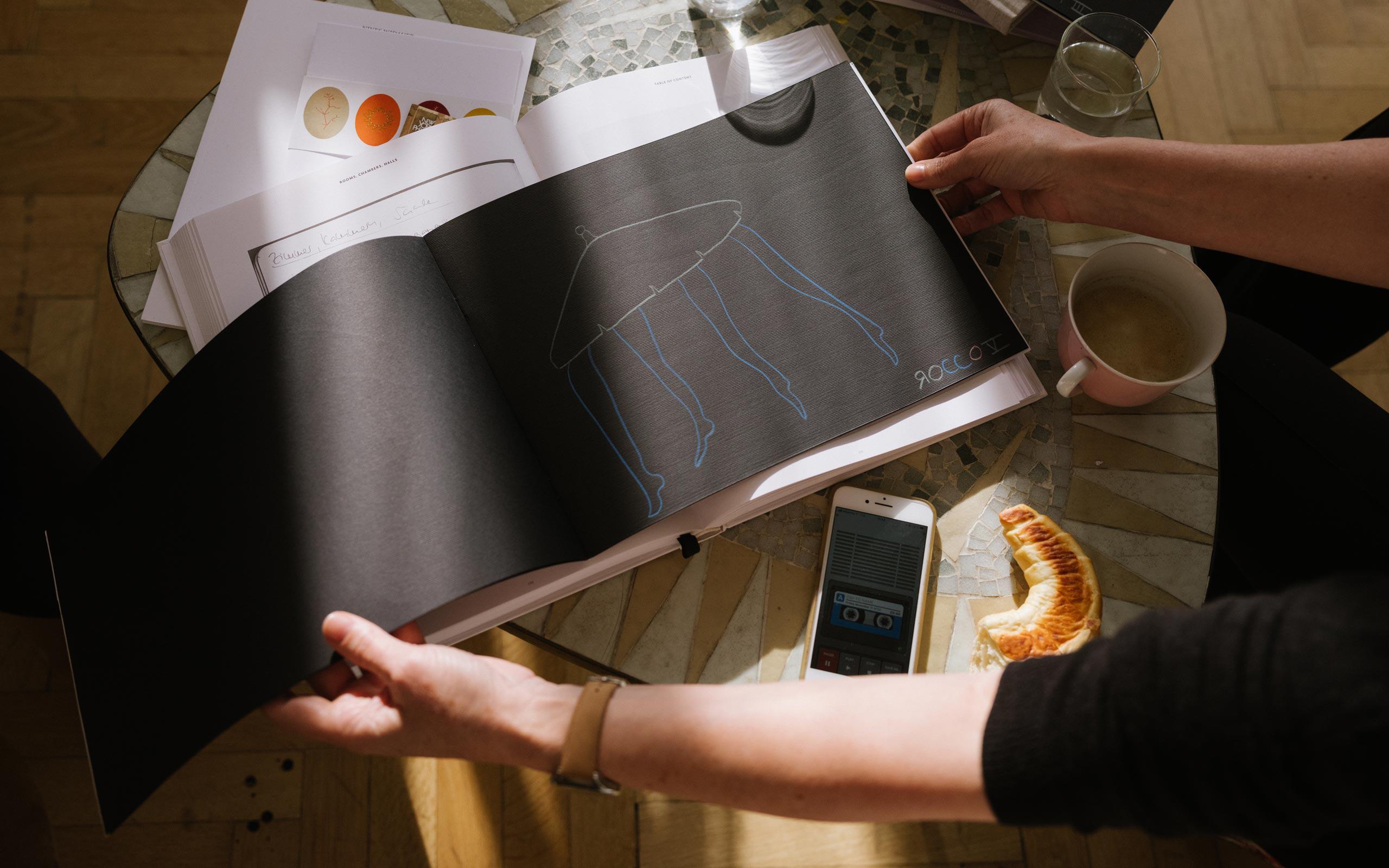
What is remarkable about your work is that you keep using various outlets for your art…
Different media mean broader opportunities. I believe in the writer Robert Musil's saying: “Where there is a sense of possibility, there is also a sense of reality”. I would call myself a transrealist – in the sense of “going through something”: I try to send my message through the media I use. I combine different kinds of media, and no matter which one I use, my thinking and dreaming is passing through.
How do you communicate your thinking and dreaming?
You could compare it to the working of a camera obscura. There is this little opening inside me directed to the outside – it projects my innermost thinking to the exterior. And the training as an artist allows this opening into my innermost being to have just the right size, not too big and not too small. This requires concentration and balance, and luck.
And does it consequently require the use of various outlets?
I simply see different interconnected spaces in myself, comparable to chambers or suites of rooms. The selection of the right medium is important and essential for each specific project. For example, I often find my way through drawing, but writing is also important to me, although I am less known for it. Then, of course, there is video, which is a medium that I have mastered because I have studied it and explored it in many ways.
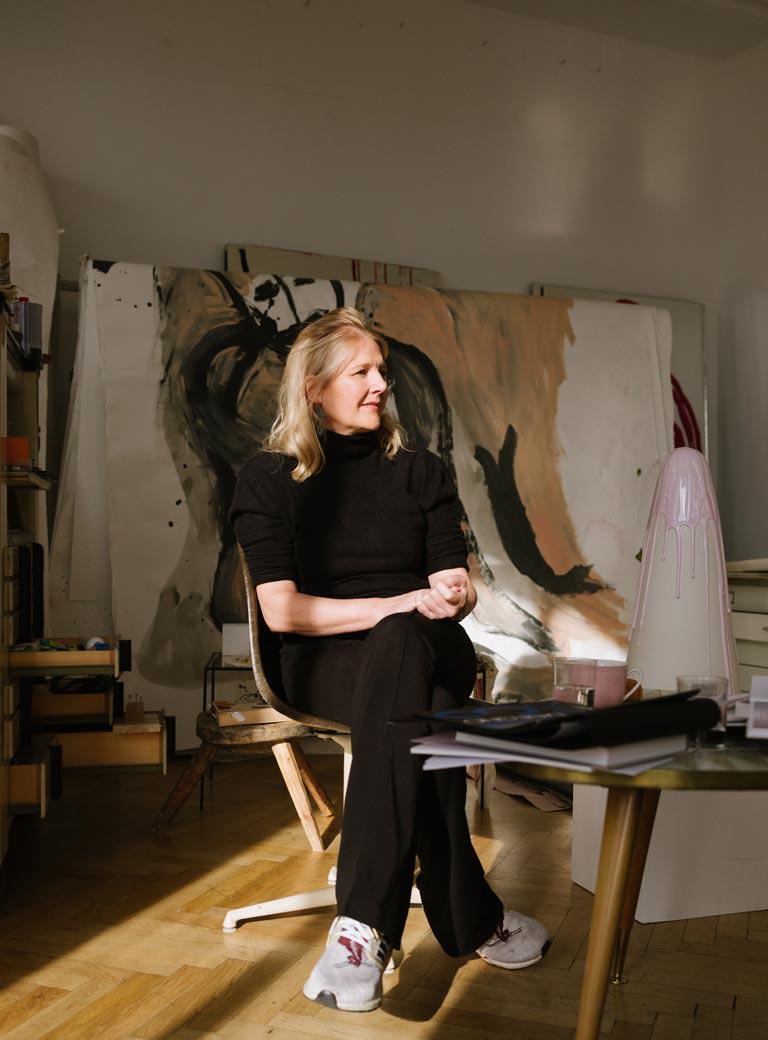
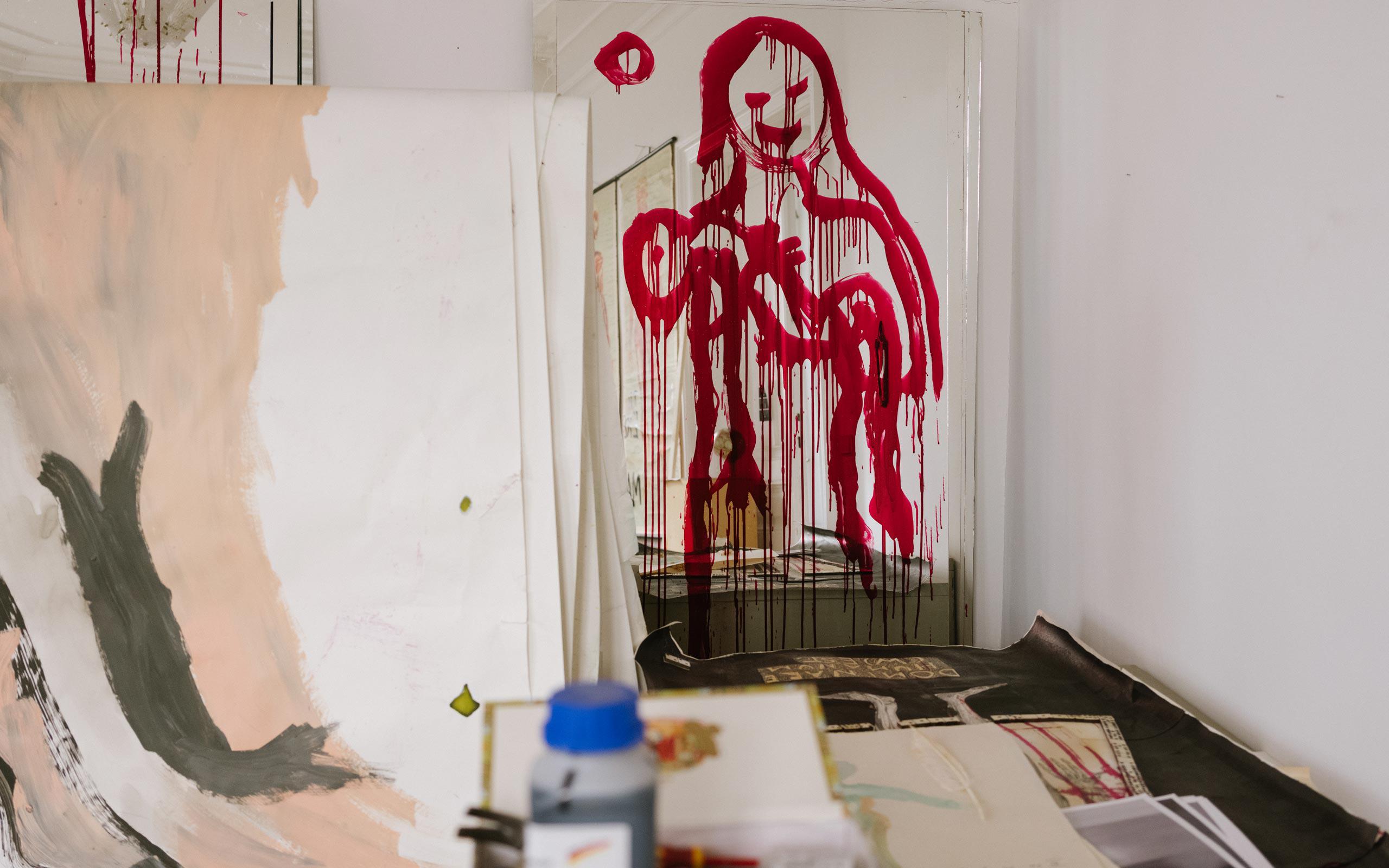
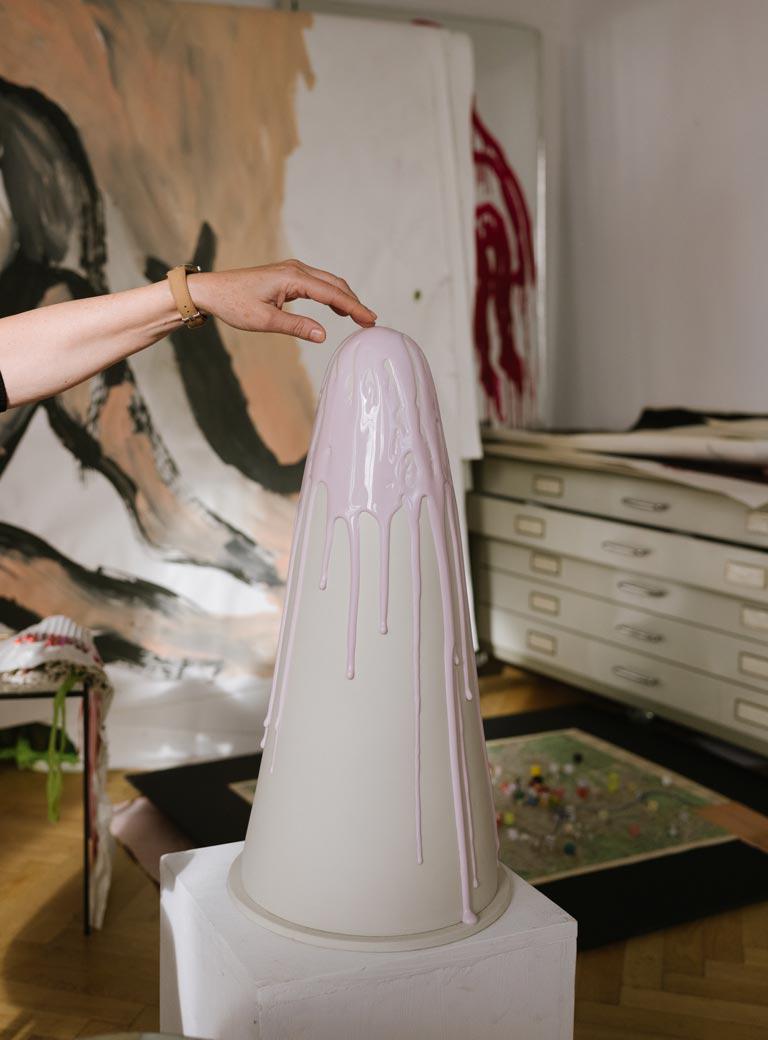
Your skill for combining different media is also apparent in your collages. What do you like about it?
That it is not about beauty, but about content. I think collages are intellectual, but at the same time highly sensual, because you can combine entities as you would in a dream. In general, collage has a lot to do with dreams: you can bring together the most absurd things that would not happen in the same frame, image or space in real life. For example, I did a collage series based on photo engravings of Venetian palaces onto which I started adding all kinds of things... This has great fantasy potential! I just feel that it is incredibly satisfying to intertwine all these different layers.
You combine fashion with layers, too…
Yes, I am working on a project with Helga Ruthner. She is part of the fashion duo Wendy & Jim, who often collaborate with artists; and we are neighbors. We started tinkering during lockdown – the outcome is a cape...
A very special cape, I must add! At the front it is cut like a jacket, but the back is ankle-length, showing a wonderful motif designed by you.
I was interested in the history of the cape – I generally begin with the historical perspective when I start working on something. And I am always interested in research, which can be the best thing about a project! So I looked into the history of the cape from the ancient world to the representation of the Madonna and its use today… It is about protective cloaks, about heroes, about capes as a sign of power, of empowerment, of protection. Based on my drawing, Helga then designed the beautiful cape.
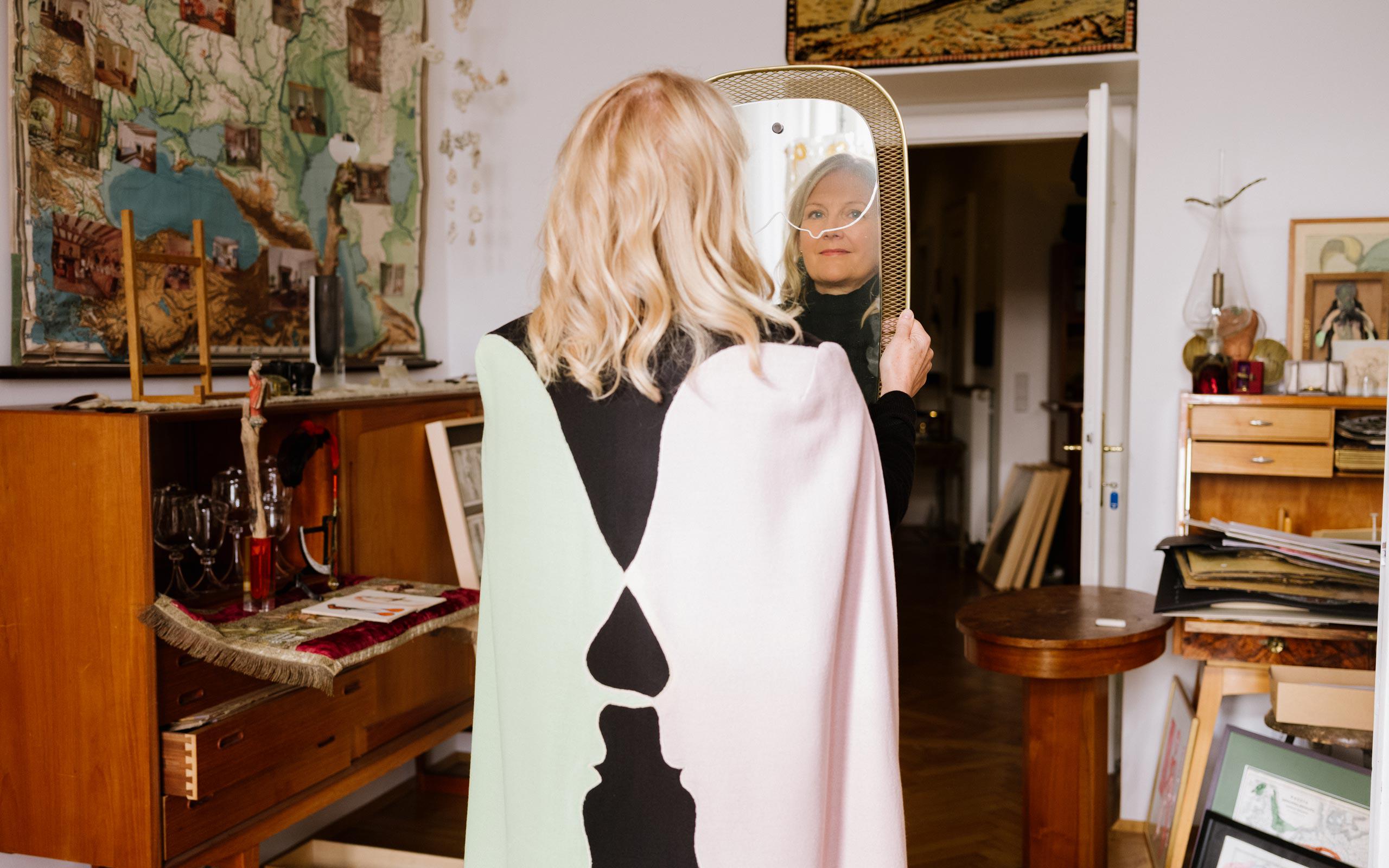
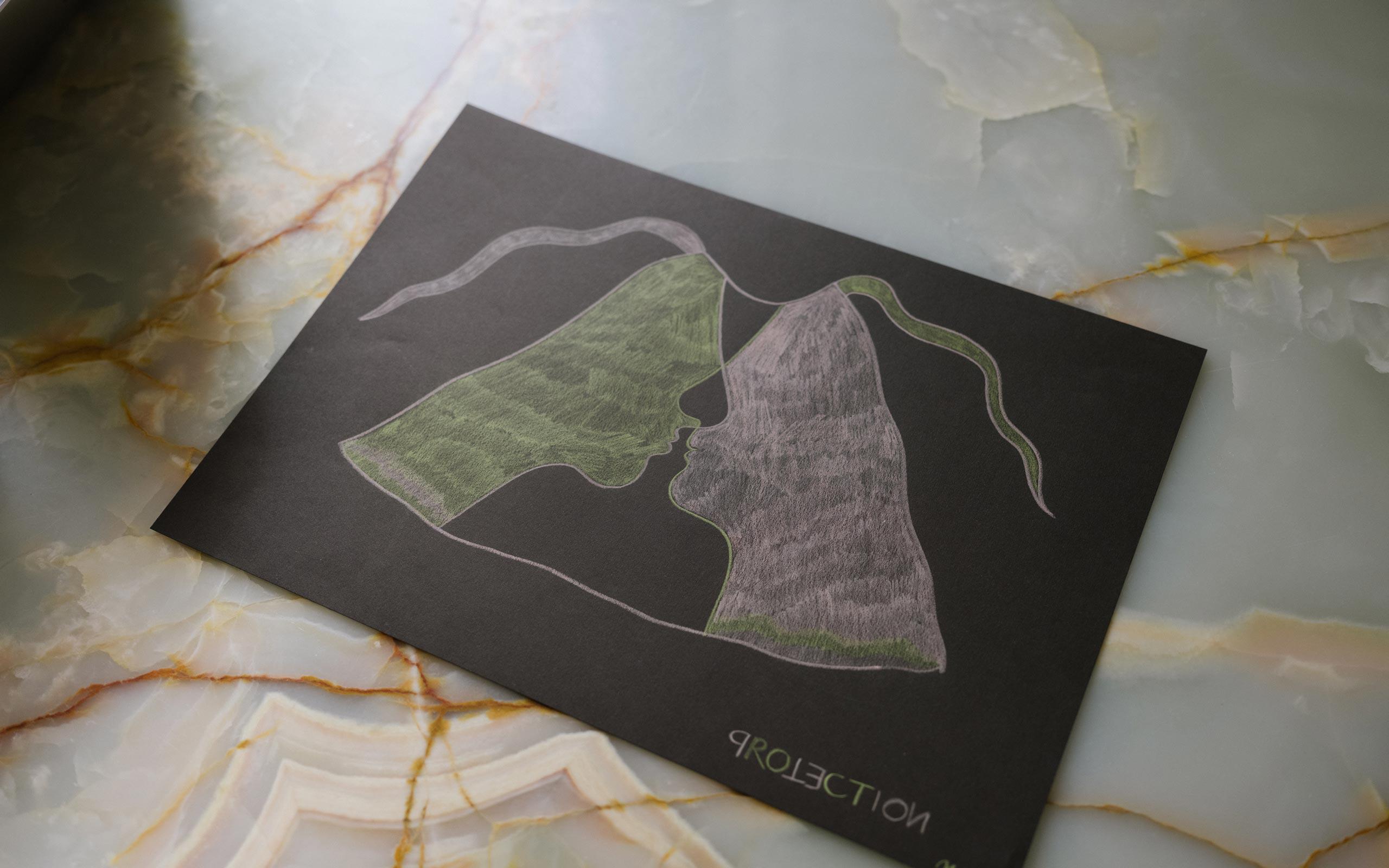
There is a lot of research work going into your projects, how can you render it all?
It is a process… I also took advantage of the lockdowns. I have finally carried out works which I had been researching a long time for, and which I always had wanted to come to life. For example, at some point I had found these two almost life-size, anatomical maps with the description of the male muscle buildup in an antiquarian bookshop. On the other hand, I have owned a Martian globe for decades. Then this idea came to me: in mythology, Mars stands for the man. Therefore, I overwrote all the original muscle labels on the anatomical map with the geographical denominations of Mars. The title of the work is Is there life on Mars. This is partly a nod to the David Bowie song, which was very important to me; it comes from a time when nobody would ever have thought that one day we would fly to Mars. But it is also a criticism of people suddenly wanting to travel there instead of solving the problems here on Earth.
Does a completed work feel like an answer to the questions you ask yourself?
Yes, it often does. Because I had had these anatomical maps for a long time, they had just hung there, and it had never been quite clear what would happen to them. And then you walk past them for the hundredth time, take a closer look and suddenly you know how you want it to be. However, such a process requires patience, because the idea must grow, and must connect with myself. When this happens, it is a stroke of fate; a gap that I can finally close. In general, for me, haptics – meaning physically making something – are just as important as the intellectual part – meaning writing and thinking. Connecting head, hand and heart is essential. When all this comes together in one work, I have found the right balance.
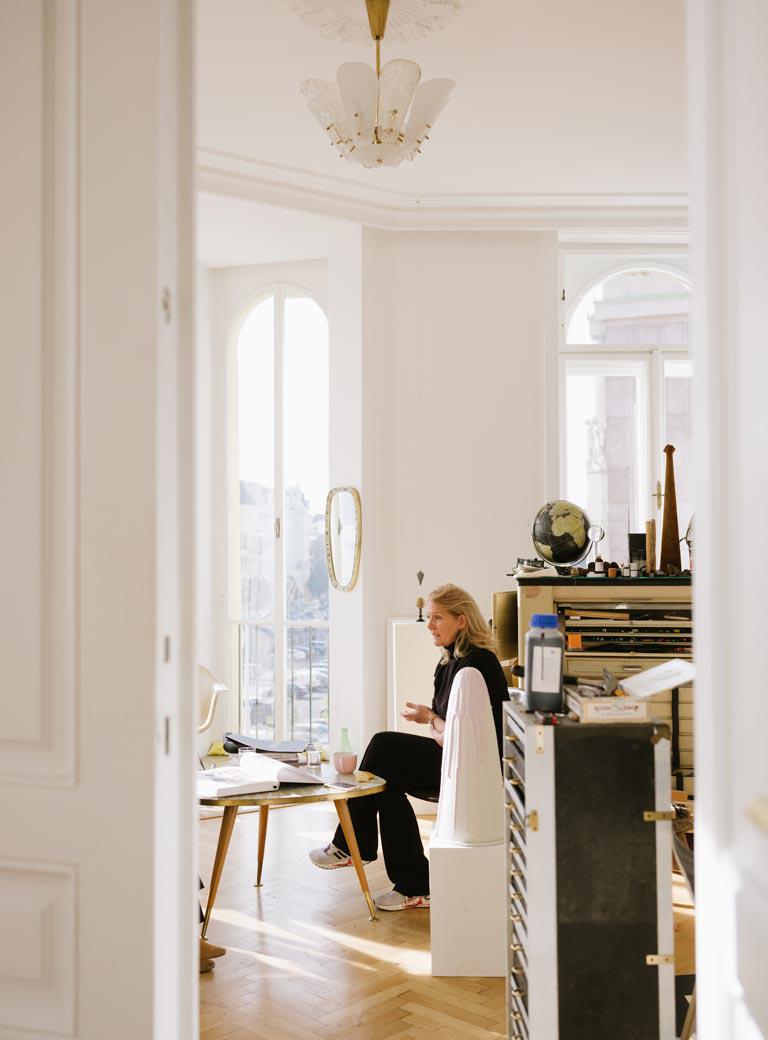
Your work appears thoughtful, careful, especially regarding your collages; one feels the thoughts and the extensive research that you put into it. Do you agree?
Careful? Rather meticulous! This may come from my practice of precise preparation for video installations, which I have internalized. I am looking for the intersection between intuition and precision. Especially now, as I am working on an international level and on several large projects at the same time, it is an advantage to have learnt how to concentrate. Times may be stressful, but I always make sure to be meticulous enough, and I keep asking myself: Is my work good enough, can I put it out into the world?
Does this require a great deal of discipline?
Yes, absolutely. And the older I get, the more I enjoy this rigor, because it helps me challenge myself and to get closer to my inner images.
On that note: Do you have the feeling that your work is getting more concise as you get older?
Well, one has practiced their instruments over the years and sharpened their eye. I think it is important to stay in touch with the latest technologies, with young people, with different opinions and other cultures. At the same time, I simply am – and time passes through me. For example, I am currently dealing with classical philosophy as part of a project on Plato. But the very next day, I might be in the woods and build an easel out of branches. And a day later I might be sitting in front of a 3D rendering. For me, life with different media is just one and the same, and a very osmotic life at that – it includes everything from a twig to an artwork program.
Does art thus mean diversity?
No, art is concentration and the ability to bring your inner self out, into the material world, and to that end you have the right or the possibility to use any material. The question is simply whether these qualities are immanent to your work and whether it will ask your fellow human beings the right questions and let them get involved. It is about having the courage to do things your own way. One person might only need pencil and paper to this end, another might use many materials, but it is a passion always. Art is a matter of character. The actor Oskar Werner once said: “Your character is your destiny”. I would underwrite that sentence.
Does art help you to understand your own life?
Yes, and to connect with others. An example is my outdoor sculpture for the garden of Villa Farnesina in Rome. It is my contribution to the Raphael exhibition Raffaello e l'antico nella Villa di Agostino Chigi which will start in March 2023. My sculpture represents the bridge over the river Tiber that Michelangelo designed back in the day, and which should have connected Villa Farnesina with Villa Farnese on the other shore. I believe that every bridge embodies a desire for connection, and that every artist seeks a way to communicate with the world through his works. Therefore, art is an osmotic way of life for me, life and work are but one. It is not by chance that I truly live in my studio!
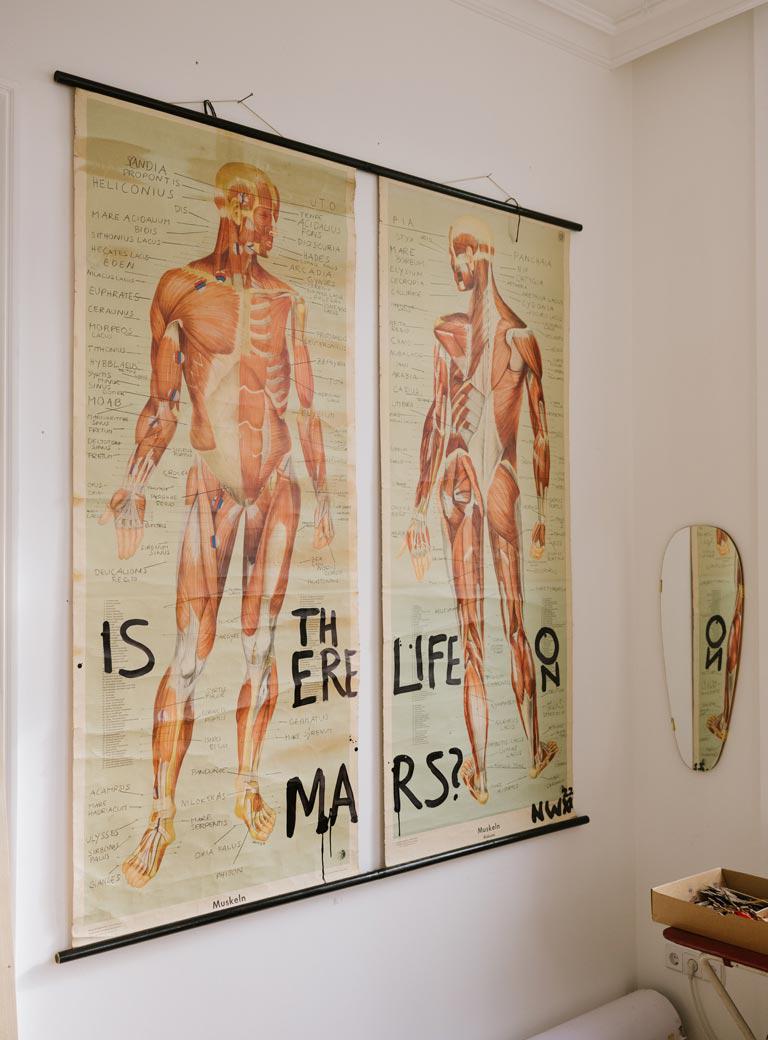
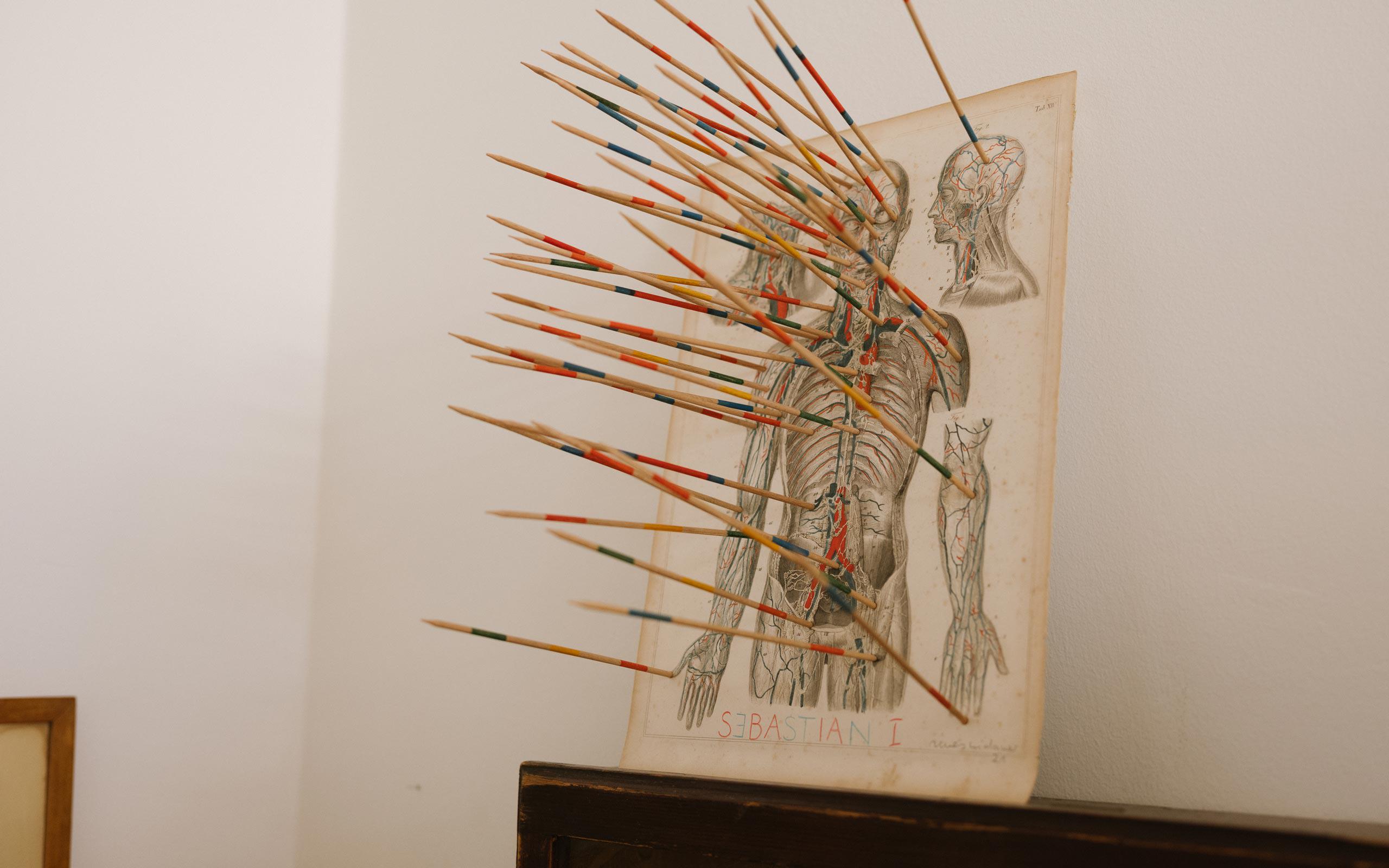
You often work in series. Where does this practice come from?
The reason lies in my childhood. My mother then had eleven small porcelain dolls, each wearing a dress of a different color. As a child, I loved these color gradations from one doll to the next and looked at them again and again. I am a synesthete when it comes to colors. For example, I associate weekdays with colors.
What color would Friday be, for instance?
Friday is orange, Saturday is black. Certain colors even give me goose bumps. For example, Dürer has a special green that absolutely throws me – in a good way!
In your studio there are small collections of shells, of feathers, of all kinds of objects... Are you a collector?
Right now, I am more of a letting-go-er! What I would say is that my whole studio and all the things I have are like my “toys”. Plato said, “life should be lived as play”. We are therefore allowed to play, which is not superficial per se, it is part of human nature. And thinking further: playing means getting engaged with my world, with my layers.
One of your exhibitions was titled Archeology of undefined future. Do you think about time?
I still love the title! But I am not only concerned with the future, I also think about the present moment, because I do not believe in linear time. I think we grow in and out of our lives. It is like a pumping movement, like breathing, in the microcosm as well as in the macrocosm. For me, the breathing of a human body is indistinguishable from the breathing of the expansive universe that condenses in the black hole. Therefore, older themes can resurface in cycles, in decades. They might have been forgotten momentarily and then will be remembered again thanks to various notes. And suddenly, they are relevant again! Writing and writing things down helps. It is an important part of my life.
You don’t just write about your work, but writing is also part of your work…
Yes, at a senior residency of the Istituto Svizzerio di Cultura in Rome, I will digitally process the Bee Romeproject, through which I investigated how the Barberini family’s bees shape the image of Rome. In addition, I am working on two texts that will be the foundation of new installations.
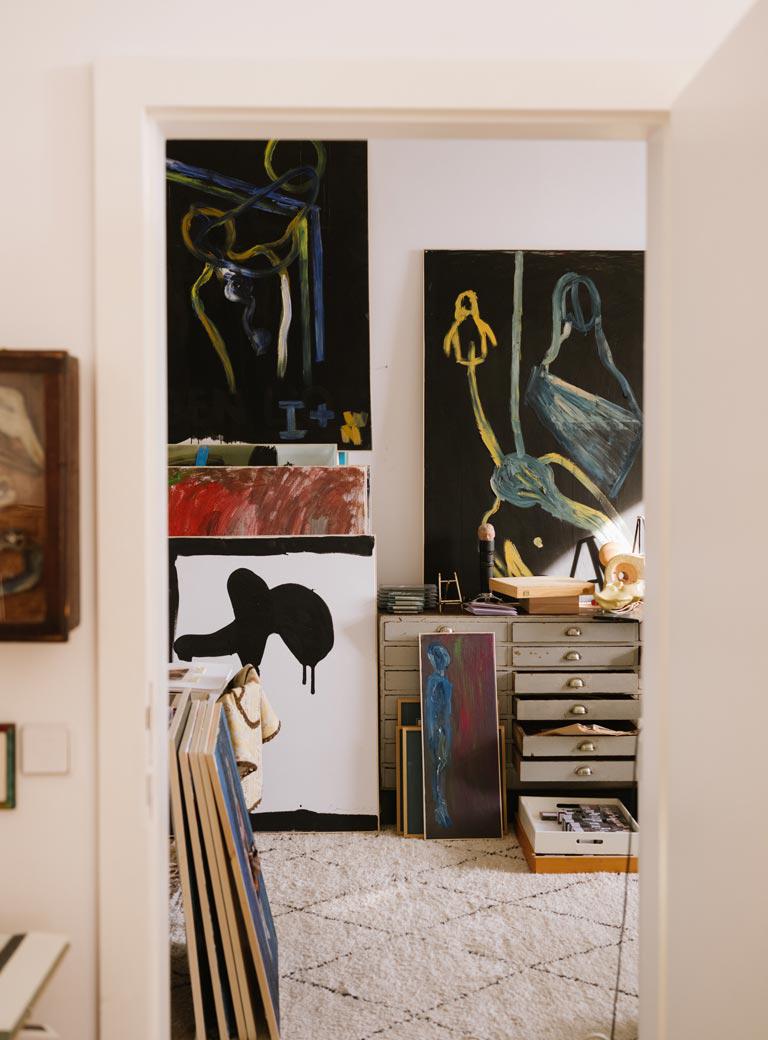
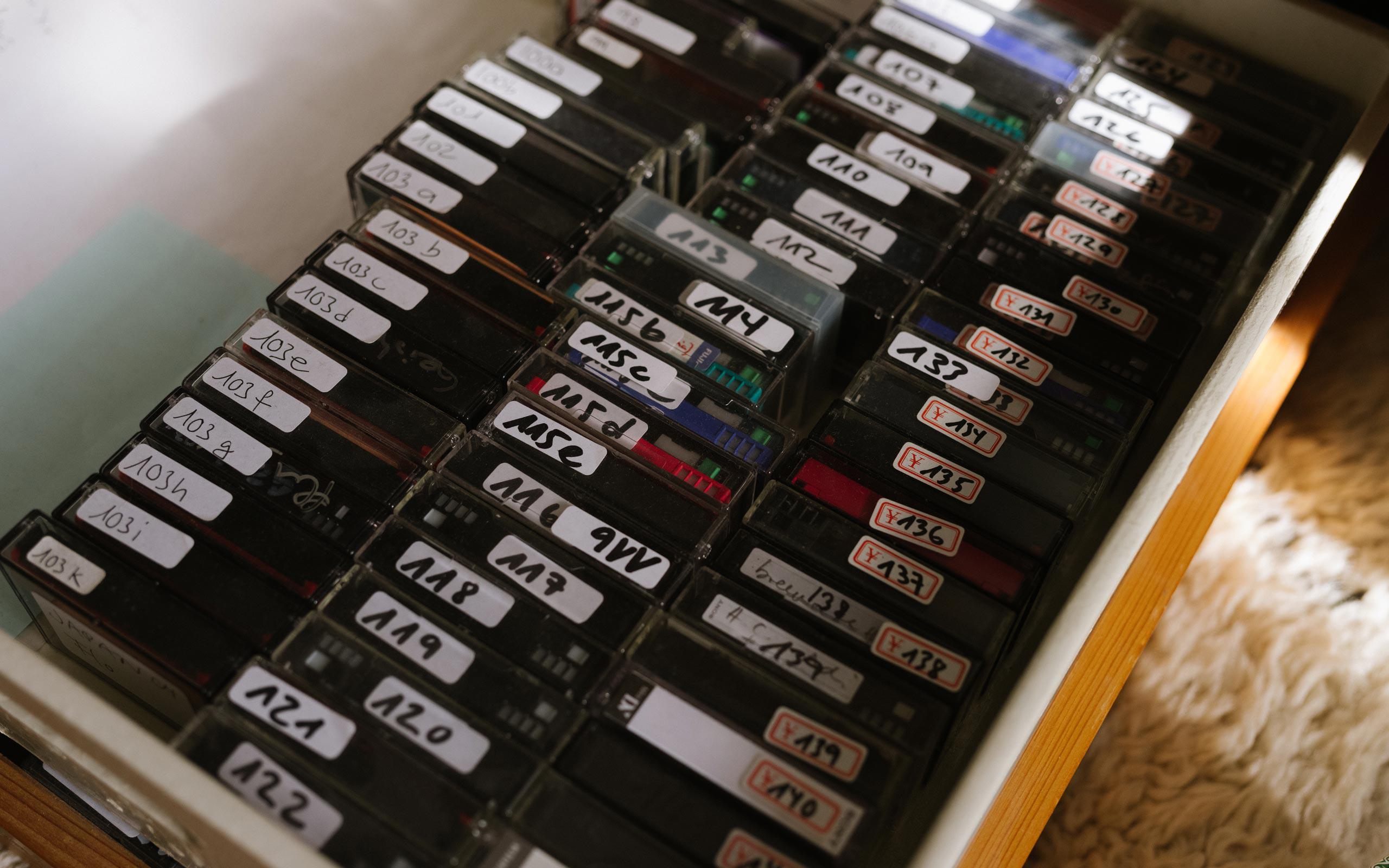
One of your works that always elicits enthusiasm is the talking Kelly Bag. It is a handbag that opens and closes, with sounds of feminine murmurs in different languages…
This is the Chatter Bag! It has a very personal story. My mother had treated herself to this bag as something very special. Then, one day, I forgot the bag on the roof of my car and drove off… By the time I had returned, another car had already run over it. Later, it was restored, and my mother eventually gave it to me. Then it was sitting in my closet for many years, until I was commissioned to do an exhibition for the Swiss Embassy in Vienna. And suddenly I thought – what might such a bag hear?
This is where the irony and the wit that characterize your work come into play!
Yes, I am absolutely committed to it. I recorded myself on the tape that is in the Kelly bag in the different languages that I speak: German and Swiss German, English, French and Italian.
Are you thus making fun of society ladies?
I am also making fun of myself! I am part of this society, so of course I must include myself! We are all parts of a whole, parts of the system.
So honesty is important in your practice?
Absolutely! I don’t hide much. Anyone who knows my work knows my life topics.
As an artist, is it even possible to hide? Is it not about letting yourself be seen?
This is a difficult discourse and a very individual way of acting. There are many artists who do not necessarily share their personal experiences with the outside world. When it comes to myself, I can say that I share some of my experiences, and some of them I prefer to code. And I believe that we all have coding systems, some people more, some people less. At any rate, this is a question that I am asking myself again and again.
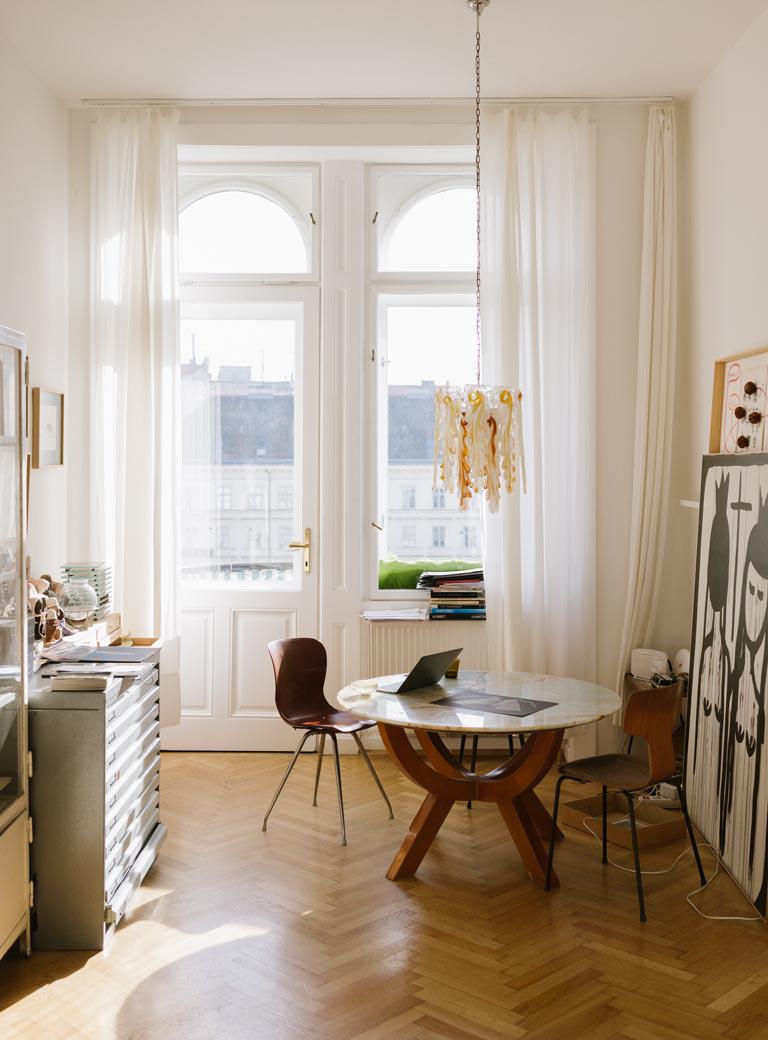
A question about the art market: do you feel that interest in female artists has increased in your time?
I certainly lived through a big change! But although there is currently a good momentum for women, a large part of the money in the art market is still being made by men.
How did you experience this development?
I started showing in the 1980s, then I had a child in 1991. At that time, I had a big show, and the curator told me that my career wouldn't continue like this, with a child... Fortunately, a lot has changed since then. And yet the combination of motherhood and art is not an easy one. That is why I needed a lot of patience with myself, because I did not always stand where I wanted to. Now I am at the point where I am doing what I want and where I have “freed” myself.
What is your self-perception as an artist?
I study, I learn, I am dreamily intuitive and precise. I see myself as part of a whole and as a future-oriented woman. I believe that real progress lies in dissolving the frontier between humans and nature. It is important not to treat nature as our subordinate, but to understand that we are all part of this system of ours.
Which artists inspire you?
I would like to extemporize a little because art is a broad term to me. I find it particularly exciting to connect – via my work and through other works of art, be it music, visual arts or literature – with people who are long dead or, conversely, with people who are not yet born. The essence of every artist can be felt in his or her work and opens new spaces of thought and feeling in another person. In this sense, my list should be seen as an entity. It includes, in no particular order, Heidi Bucher, Artemisia Gentileschi, Pablo Picasso, Bill Viola, Albrecht Dürer, Alberto Giacometti. In music, Jean Fery Rebel, Cathy Berberian and David Bowie are important to me and I admire the actress Birgit Minichmayr. As far as literature is concerned, I am inspired by Annie Ernaux, Michel de Montaigne and Ingeborg Bachmann.
What is your latest project?
I am very happy to mention the fantastic collaboration with the Viennese glassmaker Lobmeyr. Alongside Jasper Morrison and the design studio Forma Fantasma, I have been asked to design glass vessels for the company’s 200-year jubilee. They will be shown in March 2023 at the Schloss Hollenegg.
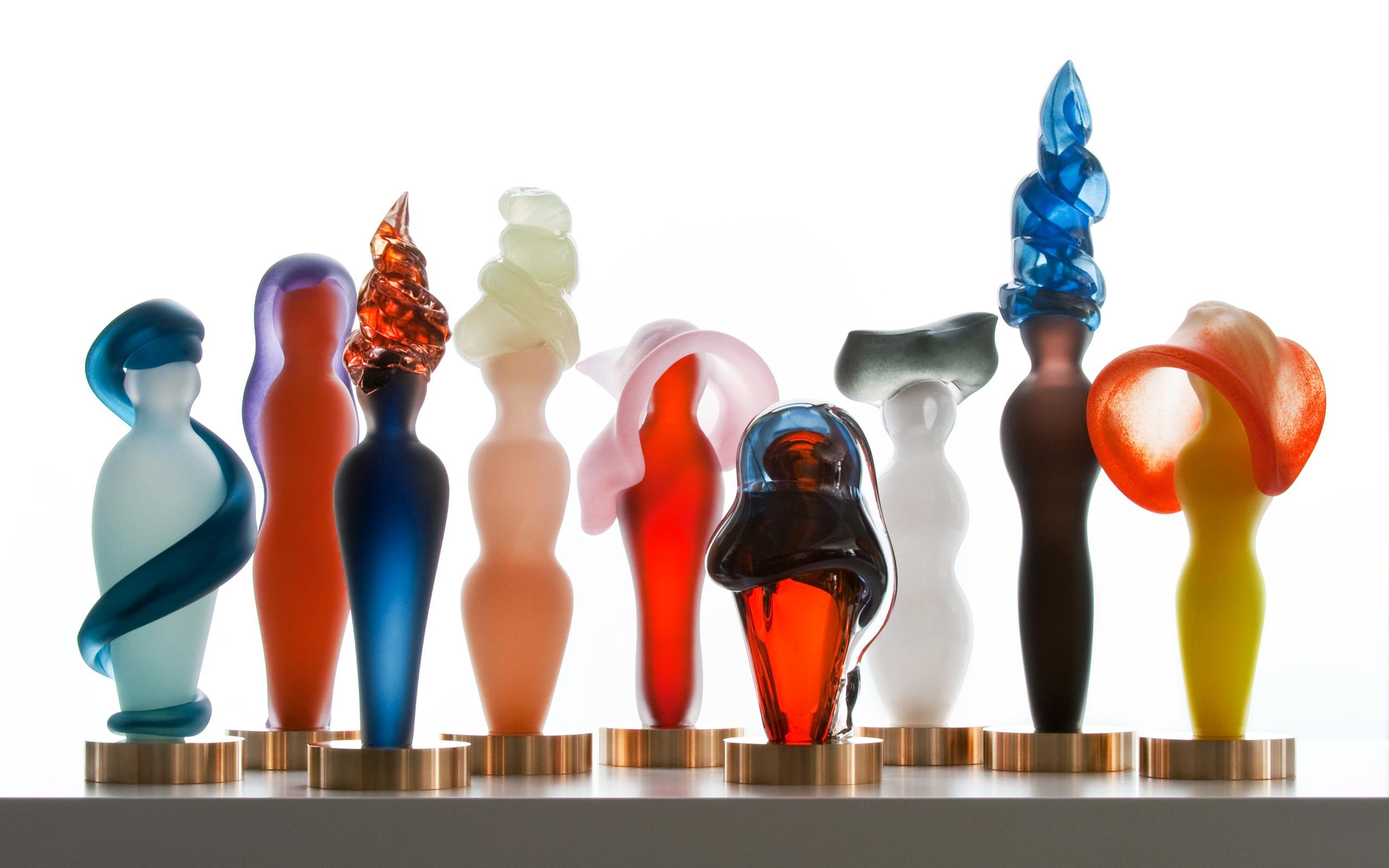
Portraits of 9 human Genius, born in the body of a Woman, 2019, Glass figures, different sizes, 25 - 45 cm high, diameter 12 cm (different sizes, 25 - 45 cm high, diameter 12 cm)
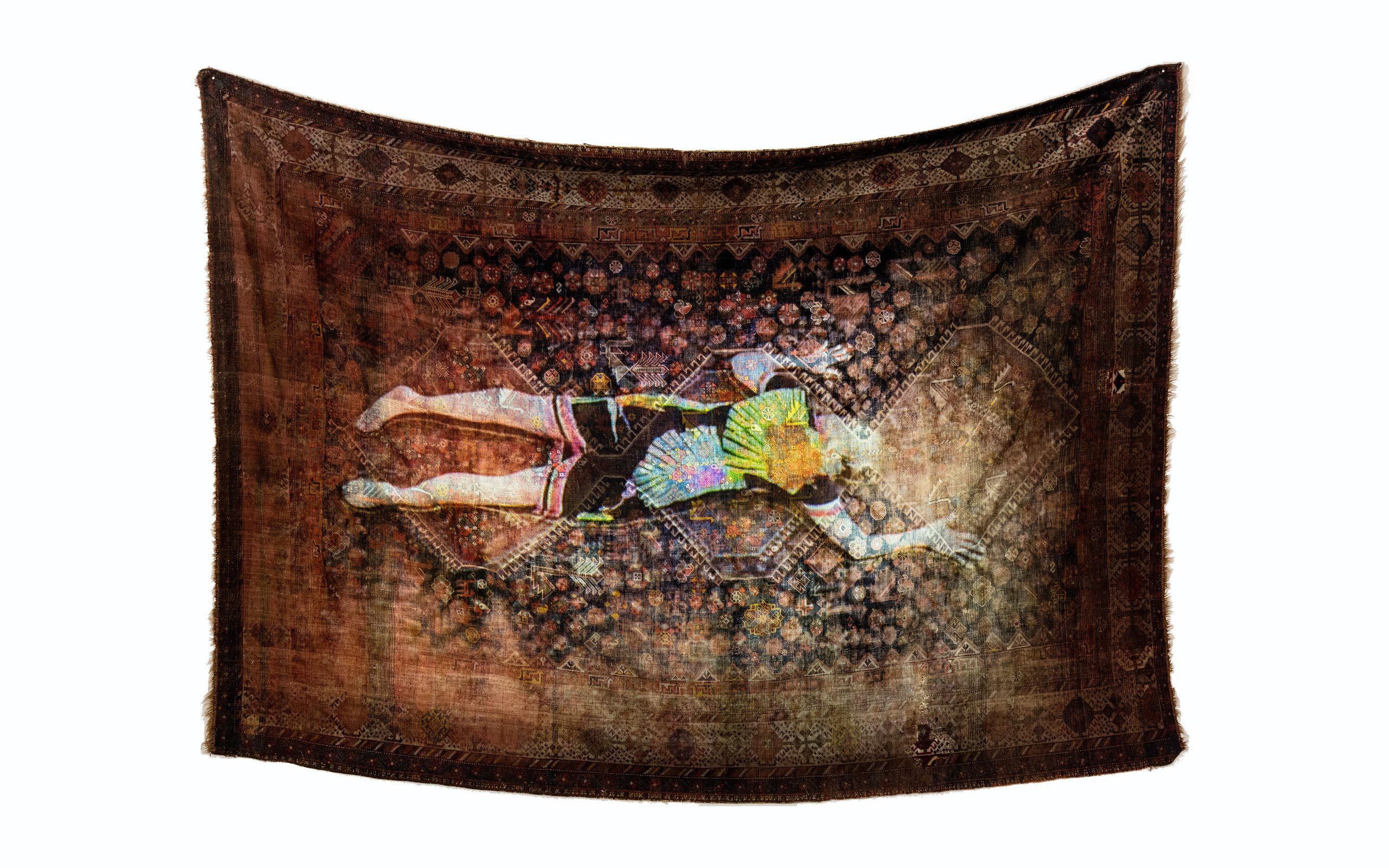
El sueño de Blanca I, 2020, Projection on carpet, 4,00 m x 2,50 m
Interview: Alexandra Markl
Photos: Christoph Liebentritt


